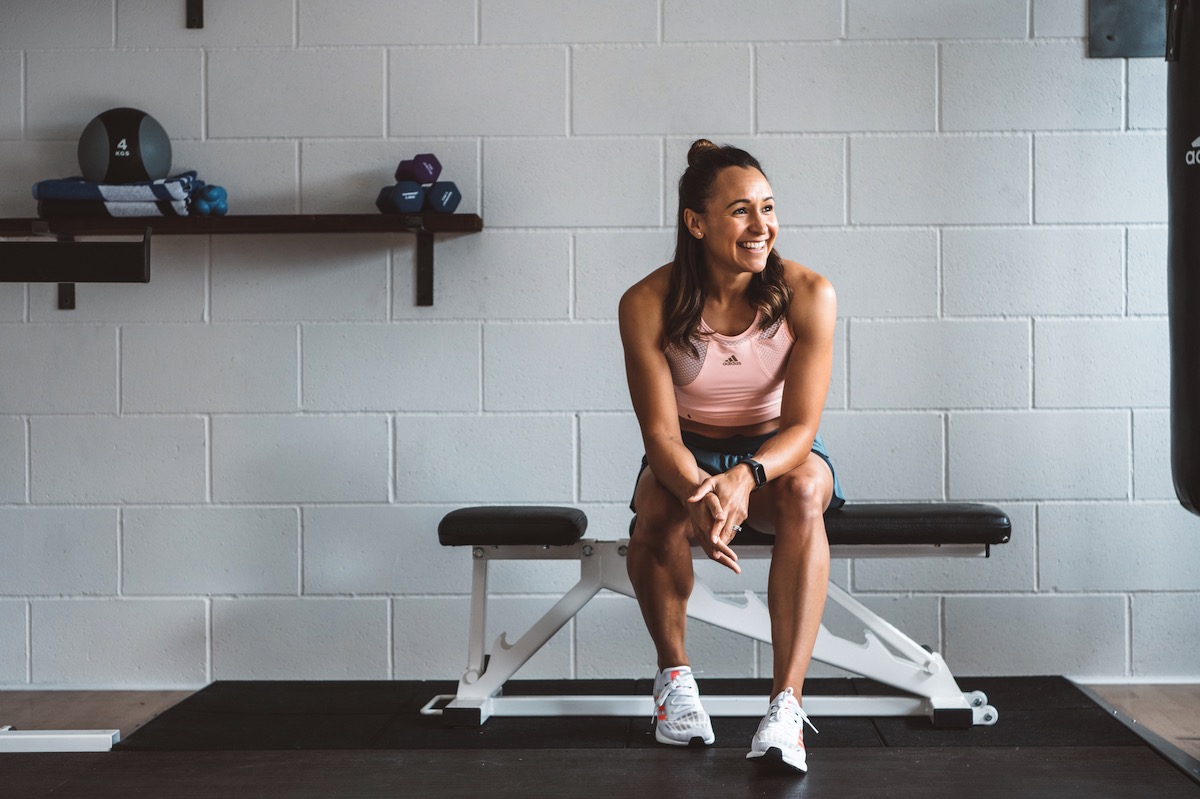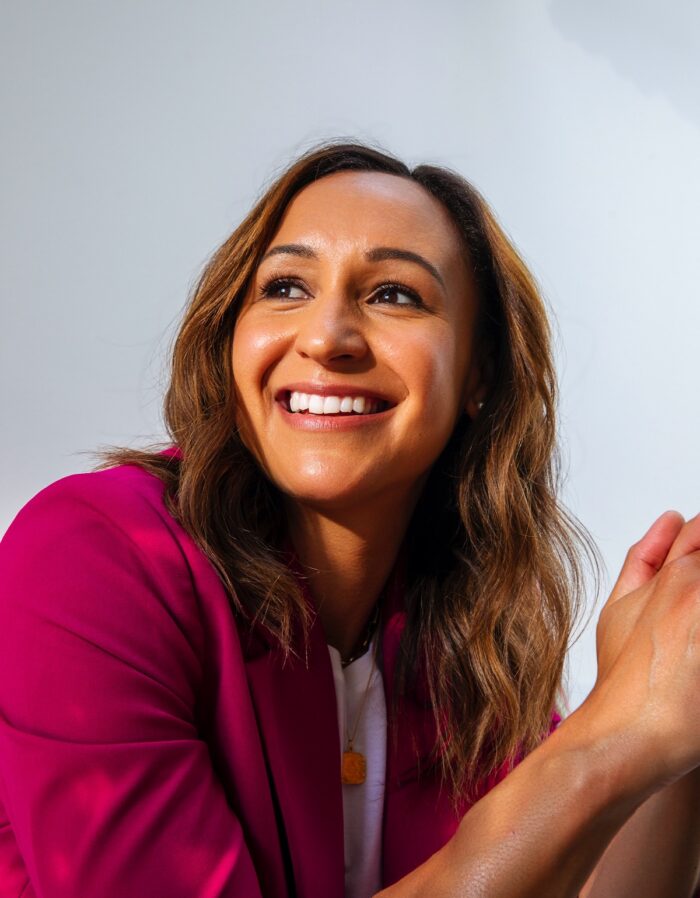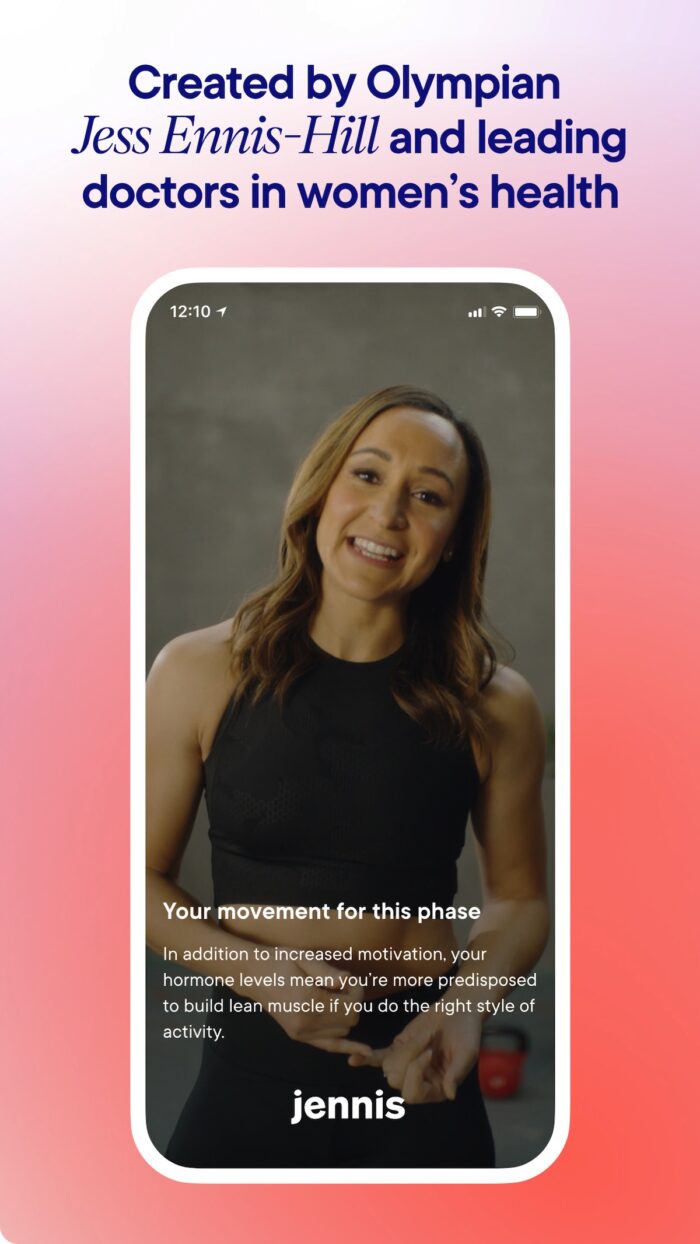Olympic Champion Dame Jessica Ennis-Hill on Working with LET golfers

Olympic champion and three-times world champion heptathlete, Dame Jessica Ennis-Hill, is one of Great Britain’s most successful athletes. She has earned so much success in her athletics career, and now she is helping others to perform better and achieve their dreams through her ground-breaking App, Jennis.

After retirement in 2016, it didn’t take the mum-of-two long to set another goal: to help others to achieve their personal best, by sharing the health and fitness expertise that she had benefited from as an athlete.
Jennis has helped many women to be at their best physically, mentally and hormonally. Now, Jess and her team of experts are taking Jennis CycleMapping to the next level, by working with elite golfers on the Ladies European Tour. The LET players are feeding back data to help build a tool which aims to empower them with the knowledge to train and perform better. Here, Jess tells us more…
What was your motivation?
It really came off the back of me having my first child. I had my son, Reggie, during the latter part of my career. As an athlete, you know a lot about your body and measure everything to get those marginal gains, but when I fell pregnant with my son, I learned so much about my body as a woman and all the hormonal and physical changes. I had a great team of people around me who guided me on the right things to do and how to come back from pregnancy and how to understand my body in a slightly different way. When I retired and had my second child, it made me realise that so many women don’t have the basics of how to go through pregnancy and come out the other side postnatally and not have long term injuries and problems such as back issues and all the other things that you have after pregnancy. It made me look at the wider picture of how most women don’t have that education around their physicality in general. That led to me wanting to create a platform to tell more women about their body and help them understand their bodies through the key life stages.
What does it do?
We aim to help women to understand the breakdown of the phases of their menstrual cycle and to understand how to move their bodies, to do the right type of exercise to fuel their body in the right way and to have those patterns as to how fluctuations in hormones throughout the month can impact sleep, mood, energy level and more. We allow women to input their details when they join and then they can edit their moods and symptoms throughout the month to create a bespoke programme for them.
What were the challenges you faced in terms of menstrual and hormonal health during your athletics career?
There was just a lack of awareness until I had my son and went through pregnancy. We would focus on the nutrition, psychology, and biomechanics really heavily, but we didn’t really touch on the impact of my menstrual cycle on my training and how that affected me in competition and recovery. It was something that I was aware of but felt uncomfortable having those conversations and how we could make changes. I think over the past couple of years the conversation has moved on and there is more information available.

How would the Jennis App have positively impacted you if it had been available when you competed?
I think it would have given me a great understanding. I didn’t know that there were four phases of the menstrual cycle when I was an athlete. I didn’t know that you could push harder at certain times and back off at others to reduce the risks of injury. If I had access to an App like we have now, I think I could have understood it better to make marginal changes and gains when I was competing.
Our medical team say that you have a great team of researchers and scientists behind you who are real experts in their field. Can you tell us about them?
From the start, we worked with an amazing physiologist, Dr Emma Ross, a pioneer in the world of sport who used to work for the English Institute of Sport who was very focused on driving awareness and helping practitioners to understand and educate their female athletes. She helped us to create the algorithm to make sure it’s in line with the physiology and science that she’s so rooted in. We also have a fantastic doctor, a yoga expert, breathwork experts, a strength and conditioning expert, so a lot of people who are backed in science but from a sports background.
Jennis currently offers CycleMapping. Can users access any additional information in other areas impacting health, such as sleep, mental health and nutrition?
You can manually input your mood, energy levels and sleep data, but that is an area that we want to build out. We have learned so much from our first early adopters who have used the App to evolve to where we are now and we are keen to understand how elite athletes use the App as well, which is why we’re working with the golfers to learn the key data points that they want to see and how they want to see them related to hormonal information we’re giving back to them. What are those metrics and how do they want to see that on a dashboard, visualised to them on a day-to-day basis. We are trying to learn from the athletes that are inputting their data to make sure we are giving them what they want to get back from it.
We understand that your research with LET golfers will help to shape the new offering and that this will be integrated into your App with Mipro software. How will the App help to guide our players and practitioners to ensure that they are performing at their best?
In elite sport, when you’re at the top of your game, you just want to find small areas where you can make a change. If you speak to most athletes, they will all tell you that they feel different at different times of the month and that can impact the way that they train more than anything. I hope that this will give the golfers an extra layer of education around what happens around their cycle. It’s a fluctuation of different hormones at different times which impacts the way they move and how hard they push themselves at certain stages of their training programmes, which can work really well. I’m looking forward to hearing how they use it and getting more feedback to evolve further.
How will it support our players with scheduling and travel across multiple time zones?
It’s just having the awareness to put those strategies in place. We’d always have a jet lag strategy in terms of how you eat and how you sleep on the flight. It makes sense to have a strategy for your cycle as well and how you recover from travel and certain sessions. I hope this will help the golfers to have better strategies in place.
How can that relate to the wider population and especially amateur club golfers?
We really want to get this offering right at the elite level and the natural progression will feed down to amateur golfers and women who want to be active and enjoy doing their sport. We are really wanting to build out different levels of the product and we are launching a perimenopause offering. The power of being able to understand our hormones will affect us throughout our whole lives as women, so that understanding and tracking is only beneficial.
How much time do you dedicate to your own health and fitness now that you have retired from athletics?
I try to carve out time for myself and I generally spend that exercising. It’s very different now as I don’t have strict deadlines and championships to prepare for. I can go out for a run and push as hard or as little as I want to. For me, switching off is finding time to run. My son, Reggie, is eight and daughter Liv is five now, so I have a nice balance.
Have you ever played golf, or would you like to play in the future?
I played golf in a charity day, and I was hit or miss. I had some awful shots and some half decent ones. When I used to train, my javelin coach Mick Hill was a really keen golfer. He was always saying that I should try golf because there are similar movement patterns for javelin. He said that I must play golf when I retire, but it’s finding time to do it and I think that I would get really super competitive and really frustrated. I would probably be one of those people that ends up smashing a golf club into the floor or something, because I couldn’t do it! I might have to get some tips from some of the women on the tour. Denise Lewis, who I do some BBC work with, is a really keen golfer who really enjoys it. There are definitely some transferrable skills between what we used to do and golf, but I’d have to find some more time to do it properly.
Do you think that golf is a good sport for women to play in general?
It’s nice to be challenged in a mental and a physical way. What I love about golf is that you can keep playing right into your latter years. My grandad absolutely loves playing golf. He’s into his 80s now but still goes and plays. I think that’s a nice thing, that you can develop your skills. Whether you’re lucky enough to be able to take it to the elite level, or it’s something that you can just enjoy for a long chunk of your life, it’s a great way to stay active and stimulate your brain as well. For those elite athletes on the tour, who are at the top of their game, what an incredible sport to be part of. I’m always fascinated about how other sportspeople train and how they prepare for majors and championships. I’d love to meet some of the players.
You were such as dedicated and mentally strong athlete. Are there any words of advice that you can share with our readers which can help them to achieve their own personal goals?
I just think that sport is an amazing way to bring people together. Whether you want to get to the top of your sport or stay active, sport can give you so many great skills that you can use in different areas of your life. There are challenges and setbacks, but having realistic goals, being confident and pushing forward can give you something amazing, so I would say, stay active and take up a sport!
July 3, 2023 3:57 pm



Comments are closed here.